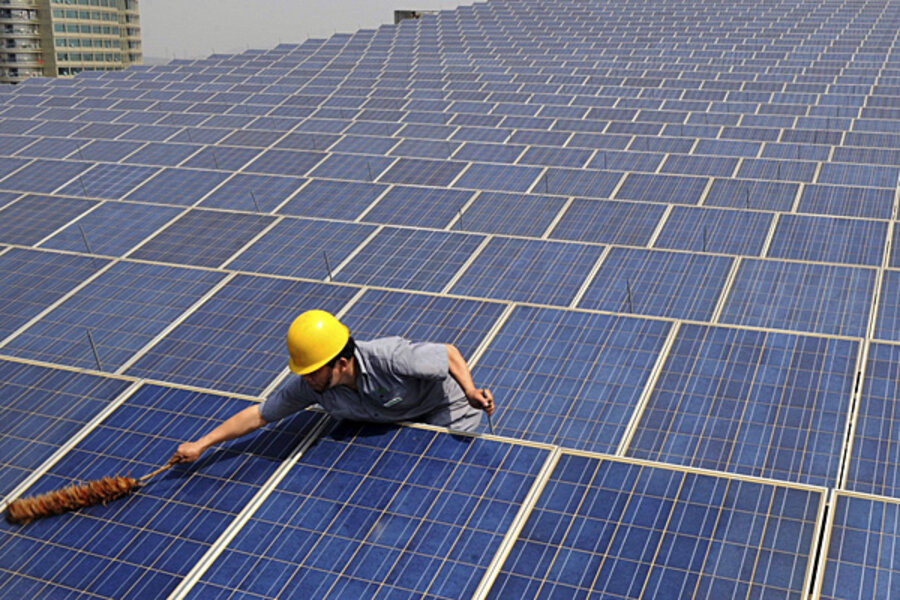Solar panels: firefighters' clean-energy foe
The proliferation of solar power may have at least one downside: It makes firefighting harder.
Firefighters say solar panels can block access to buildings in emergency situations, make it harder to cut holes in the roof to release flames and gases, and pose threats from tripping to electrocution. With more and more photovoltaic systems going up on homes and businesses across the United States, it's a growing problem.
Even solar advocates concede there's a challenge, although they say it can be mitigated.
"We are working very closely with firefighters across the United States on the development of codes and standards. After every incident, we learn from it and improve," Ken Johnson, a spokesman for the Solar Energy Industries Association trade group, told Reuters. "Firefighters don't have a good idea of how solar works. It's incumbent in us to do a better job in educating them."
Rooftop access is critical in firefighting operations because it allows for the creation of ventilation shafts that release trapped flames and superheated gases. It also helps firefighters locate the origin of the fire and any victims. The spread of rooftop solar has made that task more challenging.
"With PV arrays now covering large areas of roofs, firefighters are limited in where they can cut and where they can exit the roof," Matthew Paiss, a fire engineer for the San Jose Fire Department in California, wrote in Home Power, a renewable energy publication. "Since the PV modules cannot be cut through, and moving them is time-consuming and potentially dangerous, rooftop PV systems pose some risks—mainly shock and trip hazards."
Earlier this month, a rooftop solar array was partially to blame for firefighters' inability to contain a blaze at a 300,000-square foot warehouse in Delanco, N.J.
“The panels obstructed us from doing any roof operations,” Delanco Fire Deputy Chief Robert Hubler told The Courier-Post. Since panels retain their charge as long as they are in sunlight, fear of possible electrocution also kept firefighters at bay. Even the artificial light from a fire truck's siren can produce enough electricity to create a hazard, according to a 2011 test by Underwriters Laboratory.
That risk can be mitigated by covering panels with tarps, but that solution is "more or less impractical" in fire situations, according to Boston Fire Marshall Bart Shea.
Smarter regulations, building codes, and firefighter training can help mitigate the added challenge of solar panels, Mr. Shea said in a telephone interview. Keeping solar panels set back from the edges of flat roofs and from the peaks of pitched roofs can help ensure access for firefighters, Shea said.
The Boston Fire Department has not run into any major issues with rooftop solar panels, according to Shea, but it is an issue they are watching closely.
"There’s more and more residential applications coming about," Shea said, "and we really do have to get a handle on what the standards are and address any issues."
Photovoltaic installations in the US grew dramatically last year, with a 76 percent increase in installed megawatts over 2011, according to the Solar Energy Industries Association.






